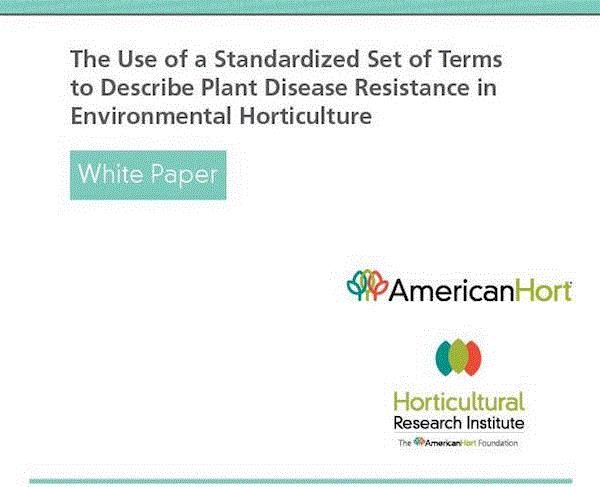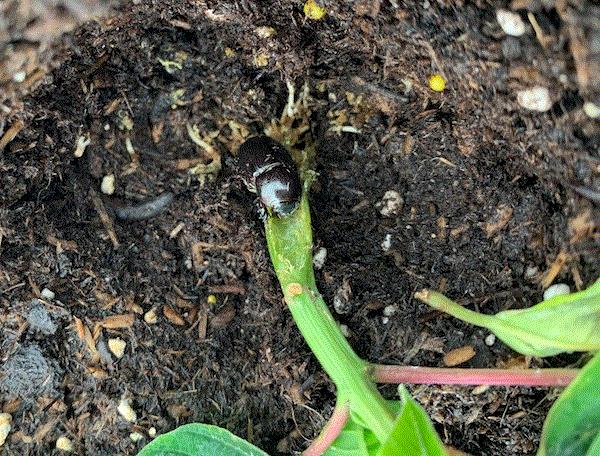The new IMF Guide is available
Hope y'all had a wonderful Labor Day weekend!
At the top of this week: The 2021 GrowerTalks Insecticide, Miticide, & Fungicide Guide, sponsored by BASF, is now available. Download a copy by clicking here.
The new IMF Guide contains the most up-to-date list of insecticides and miticides organized by target pests (compiled by Raymond Cloyd of Kansas State University) and list of fungicides organized by FRAC. This 2021 issue also features several brand new articles.

Paul Pilon of Perennial Solutions Consulting and the Editor-at-Large of Perennial Pulse interviewed Teresa Waldhour on how Teresa runs the pest management program at Piedmont Carolina Nursery in Colfax, North Carolina. Suzanne Wainwright-Evans, the Bug Lady, talked about managing spider mites. Janna Beckerman of Purdue University contributed an article on the diagnosis and management of black root rot. Emma Lookabaugh of BASF made recommendations on how to use Intrinsic Brand fungicides (such as Pageant Intrinsic, Empress Intrinsic and Orkestra Intrinsic) to reduce disease incidences and losses during propagation, transplant, outdoor production, and prior to shipping. Kate Venner of BASF discussed post-emergence weed management.
But wait, there's more! Need to optimize your rotation and application timing of pre-emergent herbicides? You should read an article on that topic by Chris Marble of University of Florida.
Click here to get a copy of the 2021 IMF Guide.

Fusarium diseases
I mentioned a few weeks ago that fusarium is not the first pathogen I think of when someone mentions root rot. It’s often pythium or phytophthora that comes to my mind. The slight isn’t a matter of pest status but the result of my ignorance.
I read up on fusarium in an effort to better myself. The more I read, the more I realized fusarium should be considered a symptom or disease complex, not simply root rot or wilt. Fusarium is a group of soil-borne fungal pathogens that cause root rot, and also stem rot, crown rot, bulb, corm or tuber rot, wilt, damping-off, and even leaf spot. And fusarium isn’t one species but several, with each causing a different symptom on different host plant species. Strains of Fusarium oxysporum cause wilt disease on many plant species, whereas Fusarium solani causes stem and crown rots. Diagnosis can often be difficult because root rot and wilt symptoms can resemble what happens when someone forgets to irrigate the plants. Let your local private or university-associated diagnosis services help you. Identify the disease properly, and distinguish fusarium from pythium, phytophthora and black root rot, so that you can choose the right fungicides for the job.
Fusarium is often introduced into a greenhouse or nursery through infected cuttings. Once established, fusarium is extremely difficult to eliminate. The sticky spores can be spread throughout the growing area through equipment or splashing water. It can be passed from one crop to the next by spores on bench or equipment surfaces, or reusing pots, trays or flats. So, never reuse pots, trays or flats without thoroughly disinfecting them.
Sanitation is the key to controlling fusarium and other root diseases. Throw out infected plants instead of trying to “cure” them of the disease. Benches should be hosed and scrubbed down, and drip lines should be flushed. Benches and drip lines should also be sanitized with KleenGrow, Green-Shield, ZeroTol or other disinfectants. Sweep up debris on the floor between crops. And, reduce the fungus gnat and shore fly population because these insects may be able to transport fusarium spores. Fungus gnat larvae can also damage roots, which opens entries for the pathogens to invade the plants.
Drench or medium incorporation of Trichoderma and Bacillus products has often been recommended as a preventive approach to fusarium and other diseases. Biological control agents, however, cannot do the job alone. Greater efficacy can be achieved by building an integrated management program, first by inoculating the medium with biological control agents followed by applying effective fungicides.

IR-4 publishes fusarium efficacy summary
So, which of the fungicides provide the best protection to your crops? Let’s ask the IR-4 Environmental Horticulture Program!
IR-4 published its fusarium efficacy summary last week. The efficacy summary is the product of compiling data from 49 greenhouse and field trials evaluating 40 active ingredients from 2001 to 2019. Application methods evaluated in the trials include foliar spray, soil drench, soil incorporation, in-furrow application, drip irrigation and tuber soak application. Several fusarium species were tested, including F. oxysporum and F. solani.
This is a difficult efficacy summary to summarize because the results are all over the place. A product can be excellent against fusarium wilt on one plant species, and only so-so against fusarium stem or root rot on another plant species. The same product can also be effective as a drench, but not worth a dime when applied as foliar spray. I’ll try my best to tease out the difference.
Let’s start from the bottom up. For fusarium root rot, drench of fludioxonil + mefenoxam (Hurricane) had good efficacy; drench of acibenzolar appears promising. Drench with metconazole (Tourney) or tebuconazole (Torque), or azoxytrobin + fludioxinil (Heritage + Medallion) soil incorporation provided excellent efficacy, and drench of pyraclostrobin + boscalid (Pageant Intrinsic) or thiophanate methyl (3336) had good efficacy against root rot and damping off in Douglas fir.
For fusarium crown and stem rot, drench of azoxystrobin (Heritage), 3336 or triticonazole (Trinity) is excellent, and cyprodinil + fludioxinil (Palladium) or Tourney is good.
For fusarium wilt, drench of Medallion, Hurricane, triflumizole (Terraguard) or Trinity is excellent; drench of acibenzolar (Actigard, Insimmo), Palladium or Tourney has good efficacy.
Again, because of the many species, symptoms, causal agents of fusarium diseases, application methods, and field versus greenhouse trials, the products tested by IR-4 often show variable results under different conditions. Have a closer look at the efficacy summary to find out the “if, but, or” of all the products tested. Get a copy of the fusarium root rot efficacy summary by clicking here.
Don't forget to rotate your fungicides!

Is this disease resistance or immunity?
My post-doctoral research associate, Gunn Gill, and I are collaborating with colleagues at Cornell University and University of Georgia on a research project to evaluate the resistance of acylsugar-producing tomato lines to spider mites, whiteflies and thrips. We also are looking at the potential of biological control in complementing pest resistance provided by acylsugars. My background is not in host plant resistance, but I have a vague idea of the difference between pest tolerance, resistance and immunity. But, that’s what you should expect from a pile-high-and-deep. Can't say the same about Joe Average, who works in the IT department and really want to get his hands dirty after his workloads from home finally slow down (after his technology-illiterate colleagues finally learn how to use Zoom).
Imagine Joe’s confusion when he is confronted with plant tags that say, “This crape myrtle is resistant to powdery mildew,” and “This crape myrtle is tolerant of powdery mildew.” What should Joe expect from these two varieties? Now, imagine Joe’s dismay when the tolerant variety he bought and planted is immediately infested with powdery mildew. I don't blame Joe for thinking us a bunch of crooks and cheats.
It has been a struggle for our industry to accurately present the levels and the associated performance expectations of disease resistance traits to our peers and customers. Without any guidance, Joe likely isn't able to distinguish the difference among the terms susceptible, tolerant, resistant and immune. More likely, the terms serve to confuse and set an unrealistic expectation for Joe.

To set an industry-wide standards and definitions for communication and expectation, AmericanHort convened a working group of researchers, breeders and industry leaders, which issued a white paper outlining definitions of immunity, resistance (high and intermediate), susceptibility and tolerance in relation to diseases and abiotic stresses (such as drought). Wonder what “immunity” and “resistance” really mean? Click here for a copy of the five-page white paper.
I see weird stuff ...
All the time, my friends, all the time. I want to close this week’s newsletter by sharing a picture taken by Tom Costamagna of Young’s Plant Farm. It’s a sugarcane beetle munching down on the stem of a new poinsettia. This is the first time I’ve seen a sugarcane beetle going after poinsettia. I don't think we are seeing the emergence of a new pest of poinsettia, most likely just a very lost and hungry beetle.
Do y’all have any weird stuff you want to stump me with? Feel free to send a picture to my email, under one condition: just be okay with me saying “I don't know” most of the time. I may not know everything, but I’ll find out!

See y'all next time!

JC Chong
Professor of Entomology at Clemson University
This e-mail received by 23,221 subscribers like you!
If you're interested in advertising on PestTalks contact Kim Brown ASAP!